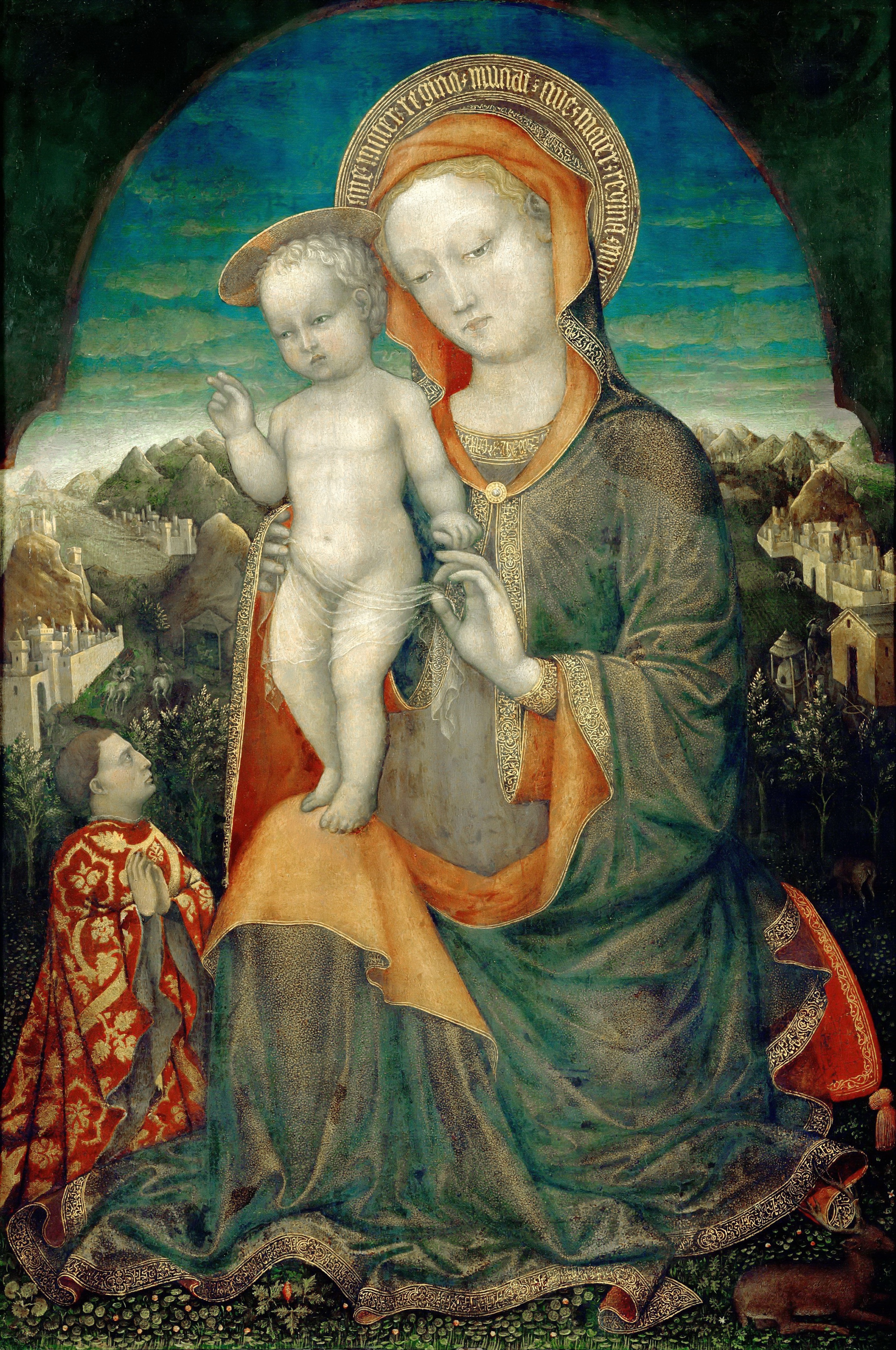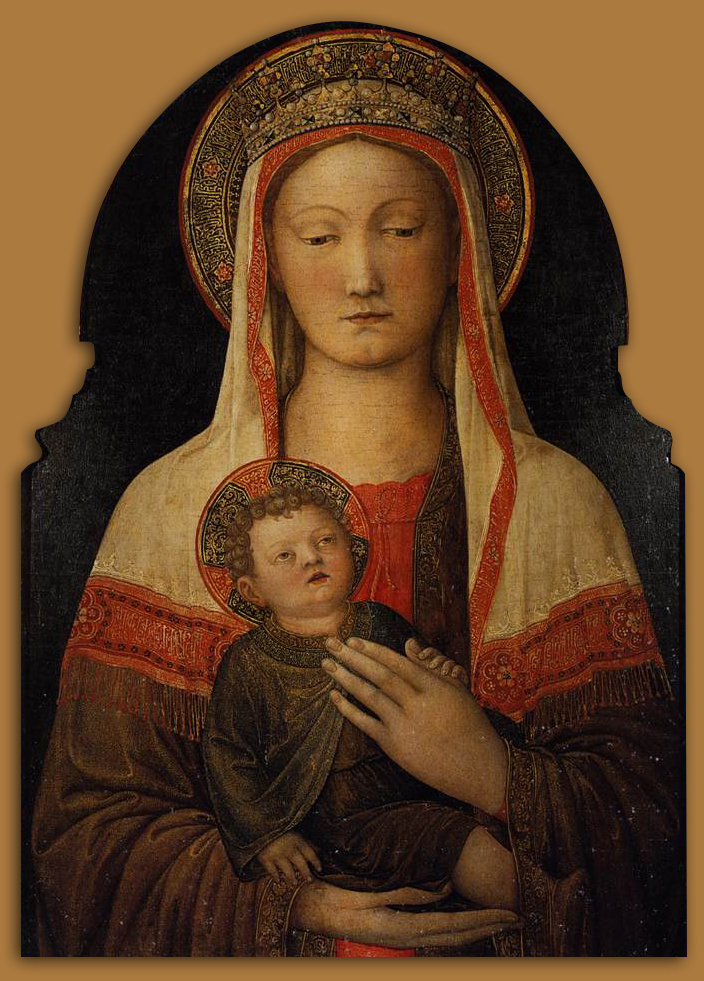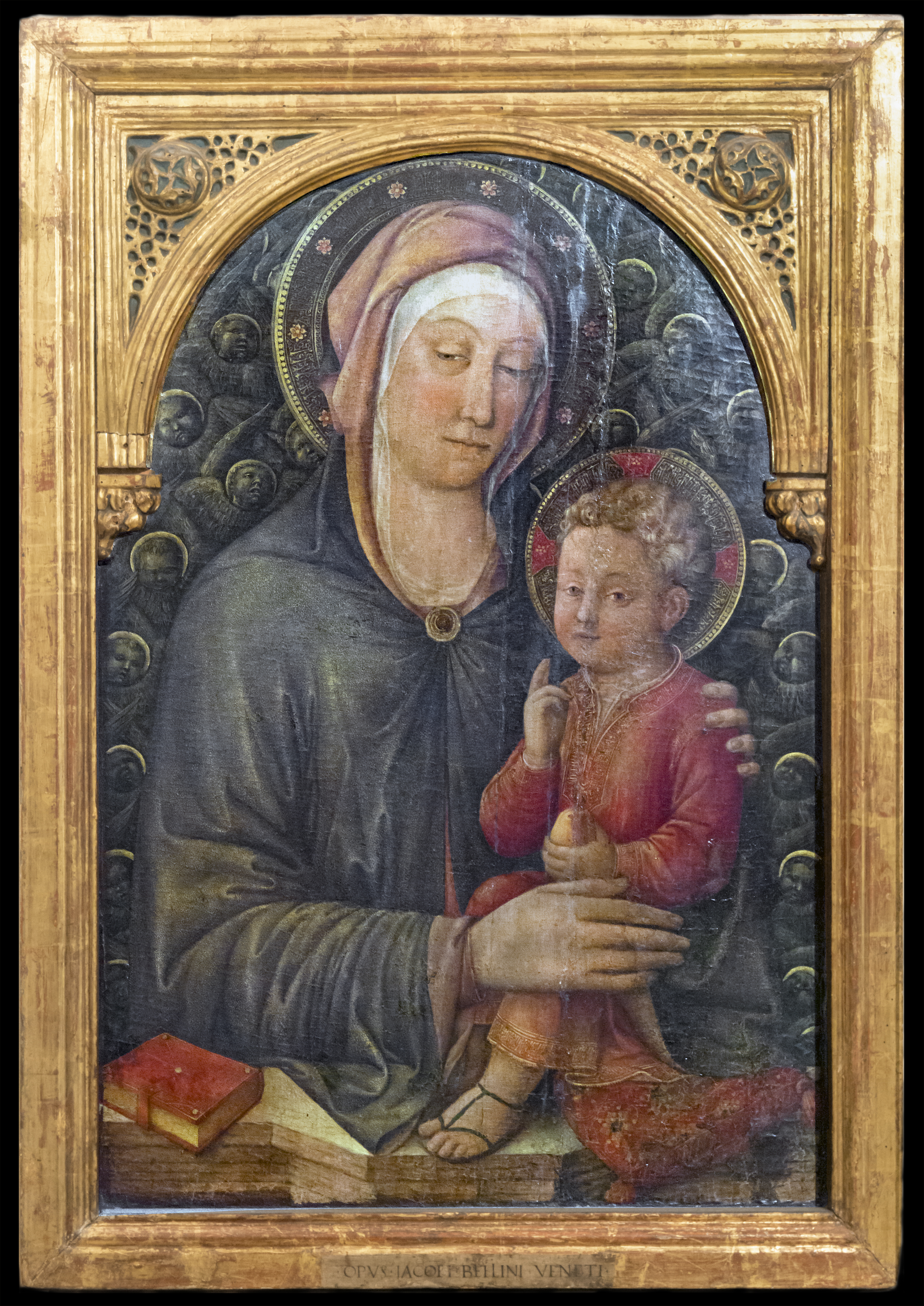1. Life
Jacopo Bellini's life journey, from his early education and establishment of his renowned workshop to his extensive travels and family connections, highlights his central role in the nascent Venetian Renaissance.
1.1. Birth and Early Life
Jacopo Bellini was born in Venice around 1400, the son of a metalworker. His early life in the thriving artistic environment of Venice laid the groundwork for his future career.
1.2. Education and Artistic Influences
Bellini is widely believed to have been a pupil of Gentile da Fabriano, a prominent master of the International Gothic style who was active in Venice during Bellini's youth. From 1411 to 1412, Bellini worked alongside Gentile da Fabriano on the frescoes at the Palazzo Trinci in Foligno.
He later traveled to Florence, arriving around 1422 or 1423. In Florence, he encountered the groundbreaking works of leading Early Renaissance artists such as Brunelleschi, Donatello, Masolino da Panicale, and Masaccio. The innovative use of linear perspective and monumental figural representation by these Florentine masters had a profound impact on Bellini's developing artistic style.
1.3. Workshop and Career in Venice
In 1424, Jacopo Bellini established his own workshop in Venice, which he successfully operated until his death. This workshop became a pivotal center for artistic training, most notably educating his two sons, Gentile and Giovanni, who would later become celebrated painters. His activities within the city included commissions for important Venetian institutions, such as the Scuola Grande di San Giovanni Evangelista in 1452 and the Scuola Grande di San Marco in 1466, though these works are now lost.
1.4. Travels and Commissions in Other Cities
Bellini's career extended beyond Venice, as he undertook significant commissions in various Italian cities:
- In Foligno, from 1411 to 1412, he assisted Gentile da Fabriano with frescoes at the Palazzo Trinci.
- In Ferrara in 1441, he served Leonello d'Este and collaborated with the polymath Leon Battista Alberti. During this period, he painted a portrait of Marquess Leonello d'Este, which has since been lost.
- He worked in Verona, where he created an enormous Crucifixion for the Verona Cathedral in 1436, a work that has also disappeared. A ruined Crucifix from his late phase is preserved in the Museum of Verona.
- Bellini sojourned in Padua, where he was instrumental in the artistic development of a young Andrea Mantegna, training him extensively in the principles of linear perspective and classicism. In 1460, he completed a portrait of Erasmo Gattamelata, which is no longer extant.
- His extant works also include an Annunciation in the church of Sant'Alessandro in Brescia.
1.5. Family and Artistic Dynasty
Jacopo Bellini's family life was deeply intertwined with his artistic career. He had two sons, Gentile and Giovanni Bellini, both of whom followed in his footsteps to become prominent painters of the Venetian School. His daughter, Niccolosa Bellini, married Andrea Mantegna in 1453, further solidifying the artistic connections within the family. Bellini's workshop served as a crucial training ground for his sons and Mantegna, and his surviving sketchbooks were actively utilized by them, demonstrating the intergenerational transfer of artistic knowledge and the foundation of a significant artistic dynasty.
2. Artistic Style and Works
Jacopo Bellini's artistic contributions are characterized by his embrace of new Renaissance principles while retaining the decorative richness of Venetian tradition. His innovative approach is best understood through his surviving paintings and, most notably, his sketchbooks.
2.1. Development of Renaissance Style
Jacopo Bellini is recognized as a founder of the Renaissance style of painting in Venice and Northern Italy. He played a pioneering role in adopting and adapting the core principles of the Renaissance, particularly the innovative use of linear perspective. This is evident in works like the Madonna with Child (dated 1448) in the Pinacoteca di Brera, where perspective is visibly integrated for the first time in his paintings, and figures appear more monumental. His exposure to Florentine masters like Masolino da Panicale contributed to this shift towards more modern, early Renaissance themes. Furthermore, Bellini was reportedly shown a treatise on perspective by the engineer Giovanni Fontana, indicating his active engagement with theoretical advancements in art.
2.2. Harmonizing Tradition and Innovation
Bellini's unique artistic genius lay in his ability to harmonize the new Renaissance techniques, such as linear perspective and monumental figure representation, with the established decorative patterns and rich color traditions that defined Venetian painting. He did not abandon the visual richness of his native art but rather accommodated innovative elements within its familiar framework, creating a distinctive bridge between the Gothic past and the Renaissance future in Venice.
2.3. Surviving Paintings
While many of Bellini's major works have been lost, several significant paintings are still extant:

- Madonna and Child (c. 1430), held at the Accademia Carrara, was once attributed to his master, Gentile da Fabriano, underscoring its early stylistic links to the International Gothic.
- The Virgin of Humility, adored by a prince of the House of Este (c. 1440), located in the Louvre Museum, was likely commissioned by one of the brothers of Leonello d'Este. This painting notably features a Pseudo-Kufic inscription on the mantle hem, a decorative element.
- The Madonna with Child (1448) in the Pinacoteca di Brera is significant for showcasing the visible incorporation of linear perspective and a more monumental treatment of figures, reflecting Florentine influences.
- Madonna with Blessing Child (1459) is part of the collection at the Gallerie dell'Accademia in Venice.


- Madonna and Child (1450) is housed in the Uffizi Gallery in Florence.
- Another Madonna With Child (c. 1465) is found at the Los Angeles County Museum of Art.
- A ruined Crucifix from his later period is located in the Museum of Verona.
- An Annunciation is preserved in the church of Sant'Alessandro in Brescia.
- Santi Antonio Abate e Bernardino da Siena is held at the National Gallery of Art in Washington, D.C.
- A Madonna triptych is noted as a collaborative work by the Bellini brothers.
2.4. Sketchbooks: A Visual Legacy
Bellini's most important and enduring legacy lies in his two surviving sketchbooks. One is preserved in the British Museum in London, and the other in the Louvre Museum in Paris. These sketchbooks are not merely preparatory drawings but comprehensive visual records demonstrating Bellini's profound interest in depicting landscapes and elaborate architectural designs. They are invaluable for understanding his artistic process and the evolution of his ideas, particularly in the application of perspective. Furthermore, these sketchbooks served as a direct resource and inspiration for his sons, Gentile and Giovanni, and his son-in-law, Andrea Mantegna, profoundly influencing their own artistic development and demonstrating the intellectual inheritance within the Bellini workshop.
2.5. Notable Lost Works
Several of Jacopo Bellini's significant works are no longer extant but are known through historical records, highlighting the scale and ambition of his projects:
- An enormous Crucifixion painted for the Verona Cathedral in 1436.
- A portrait of Leonello d'Este, executed in 1441 during his service to the Este family in Ferrara.
- Major works for important Venetian churches, including San Giovanni Evangelista (1452) and St. Mark (1466), which have since disappeared.
- A portrait of the condottiero Erasmo Gattamelata, completed in Padua in 1460.
3. Influence and Legacy
Jacopo Bellini's impact on Renaissance painting, especially in Venice, was profound. He is recognized for establishing a foundational style that deeply influenced future generations, particularly within his own artistic family.
3.1. Impact on Descendants and Pupils
Jacopo Bellini's most significant and direct influence was on his own family. Both of his sons, Gentile Bellini and Giovanni Bellini, would become celebrated painters, building upon the foundational techniques and artistic principles they learned in their father's workshop. His son-in-law, Andrea Mantegna, a towering figure of the Early Renaissance, received crucial training from Jacopo Bellini, particularly in the meticulous application of linear perspective and the exploration of classicism. Bellini's surviving sketchbooks played a vital role in this transmission of knowledge, serving as a direct visual resource for his descendants and pupils, facilitating the development of their individual styles while maintaining a core artistic lineage.
3.2. Contribution to Venetian Art
Bellini played a foundational role in establishing the Renaissance style in Venice, which had previously been dominated by the International Gothic aesthetic. He was among the first Venetian artists to thoroughly engage with and incorporate the innovations of the Florentine Renaissance, such as linear perspective and a more monumental approach to figures. By integrating these new elements with the rich color and decorative traditions native to Venice, he helped to forge a distinct Venetian Renaissance style. His workshop effectively became the nucleus of 15th-century Venetian painting, positioning him as a core figure of the influential Venetian School.
3.3. Art Historical Significance
Jacopo Bellini's artistic achievements mark a pivotal moment in the transition from the International Gothic to the Renaissance in Venice. His pioneering adoption of linear perspective and his ability to synthesize new artistic ideas with existing Venetian traditions set the stage for the flourishing of the Venetian Renaissance. Although many of his grand frescoes and paintings have been lost, the enduring importance of his work and legacy is confirmed by his surviving sketchbooks, which serve as a testament to his innovative spirit and intellectual curiosity. His direct mentorship of his sons, Gentile and Giovanni, and his son-in-law, Andrea Mantegna, cemented his place as a foundational figure whose influence resonated through generations, shaping the trajectory of Italian art.